Child Solutions

Child Solutions
Child Solutions specializes in providing cutting-edge hearing aid technology tailored specifically for children. Our team of pediatric audiologists and specialists ensures precise diagnosis and fitting, guaranteeing optimal performance for your child. Our devices are designed to meet the unique needs of young users, offering comfort, durability, and effective sound management. Our comprehensive services include personalized fittings, ongoing adjustments, and educational support for parents and caregivers. At Child Solutions, we are committed to improving auditory function, speech development, and overall quality of life for children with hearing loss. Trust us to provide the best hearing solutions for your child’s individual needs.

Child Solutions
Child Solutions specializes in providing cutting-edge hearing aid technology tailored specifically for children. Our team of pediatric audiologists and specialists ensures precise diagnosis and fitting, guaranteeing optimal performance for your child.
Our devices are designed to meet the unique needs of young users, offering comfort, durability, and effective sound management. Our comprehensive services include personalized fittings, ongoing adjustments, and educational support for parents and caregivers. At Child Solutions, we are committed to improving the auditory function, speech development, and overall quality of life for children with hearing loss. hearing test for child in saharanpur. Trust us to provide the best hearing solutions for your child’s individual needs.
Hearing Impaired
Type of early intervention therapy for young children who are deaf and hard of hearing, or those who use hearing technology such as hearing aids or cochlear implants.

1. Aphasia:- A language disorder that affects a person’s ability to communicate.
2. Dysphagia or swallowing:- difficulty can make eating and drinking challenging. can be treated with a variety of therapies including speech therapy and exercises.
3. Autism/Sensory Integration Therapy:- Sensory integration therapy (SIT) is a clinic-based play-based, play-based treatment that can help children with autism improve their process and integrate sensory information.
4. Physiotherapy for children:- Paediatric physiotherapy treatment is based on a number of hands-on techniques exercises and functional interventions with the goal of addressing interventions addressing functional impairments including muscle tone, strength, coordination balance, posture, mobility and achieving an optional range of emotion.
5. Cerebral Palsied:- A congenial disorder affecting movement, cerebral palsy is due to abnormal brain development, often before birth.
6. Hypotonic or Hypertonic:- A hypertonic solution has a higher concentration of solute than other solutions, meaning water will flow into it.
7. Muscular Dystrophy:- A group of genetic diseases that cause progressive weakness and loss of muscle mass. In muscular dystrophies, abnormal genes (mutations) lead to muscle degeneration most forms begin in the child.
8. Hearing Test:- A hearing test provides an evaluation of the sensitivity of a person’s sense of hearing and is most often performed by an audiologist using an audiometer. An audiometer is used to determine a person’s hearing sensitivity at different frequencies.
9. Tinnitus:- Ringing or buzzing noise in one or both ears that may be constant or come and go, often associated with hearing loss.
10. Vertigo: This is a sensation of motion or spinning that is often described as dizziness. Vertigo is not the same as being lightheaded. People with vertigo feel as if they are actually spinning or moving.
11. Childhood language evaluation:- Your Child’s Speech and language evaluation are a measurement of their communication skills, including speaking, listening, and social language abilities.
When to have a hearing assessment for babies?
Hearing evaluation is critical for all newborns, as recommended by the World Health Organization (WHO), ideally within the first 4 to 5 weeks of life, but it can be performed up to 3 months of age. Parents should be vigilant for signs indicating normal hearing development; any delay should prompt an immediate hearing assessment. During the first year of life, infants typically startle in response to sudden loud noises, begin to recognize and respond to a parent’s voice by around 3 months, demonstrate the ability to turn their eyes or head towards a sound source by 6 months, and may start imitating sounds and saying a few words such as “Mama” or “bye-bye” by 12 months.
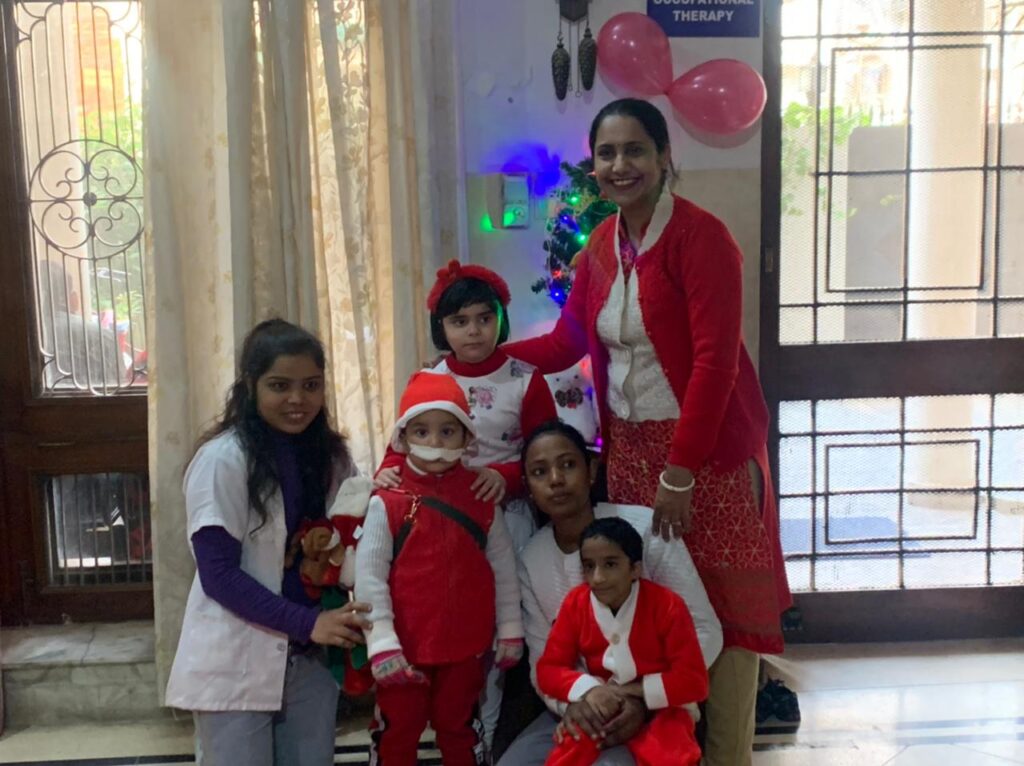
When to have a hearing assessment for babies?
Hearing evaluation is critical for all newborns, as recommended by the World Health Organization (WHO), ideally within the first 4 to 5 weeks of life, but it can be performed up to 3 months of age.

Parents should be vigilant for signs indicating normal hearing development; any delay should prompt an immediate hearing assessment. During the first year of life, infants typically startle in response to sudden loud noises, begin to recognize and respond to a parent’s voice by around 3 months, demonstrate the ability to turn their eyes or head towards a sound source by 6 months, and may start imitating sounds and saying a few words such as “Mama” or “bye-bye” by 12 months.

Is Audiological Procedure-Hearing Screener same for both adults and children?
The world sounds markedly different to infants compared to adults. Several methods can be used to test a child’s hearing, depending on their age, development, and health. A baby’s hearing evaluation may include tests like Otoacoustic Emissions (OAE), Auditory Steady-State Response (ASSR), and Auditory Brainstem Response (ABR or BERA). These tests are ideally complemented by Behavioral Audiometry, a screening test used to observe a child’s response to various sounds. During Behavioral Audiometry, an audiologist closely observes the child’s reactions to calibrated speech and pure tones. These tests help assess hearing ability and guide appropriate interventions for children of different ages.

Is Audiological Procedure-Hearing Screener same for both adults and children?
The world sounds markedly different to infants compared to adults. Several methods can be used to test a child’s hearing, depending on their age, development, and health.
A baby’s hearing evaluation may include tests like Otoacoustic Emissions (OAE), Auditory Steady-State Response (ASSR), and Auditory Brainstem Response (ABR or BERA). These tests are ideally complemented by Behavioral Audiometry, a screening test used to observe a child’s response to various sounds. During Behavioral Audiometry, an audiologist closely observes the child’s reactions to calibrated speech and pure tones. These tests help assess hearing ability and guide appropriate interventions for children of different ages.
What are the Causes of hearing loss in children?
Hearing loss is a relatively common birth defect, affecting approximately 1 to 3 out of every 1,000 babies. While many factors can contribute to hearing loss, about half the time, the exact cause remains unknown. Several circumstances can increase the likelihood of hearing loss in a child, including premature birth, an extended stay in the neonatal intensive care unit (NICU), jaundice requiring a blood transfusion, exposure to medications known to cause hearing loss, a family history of childhood hearing loss, birth complications, frequent ear infections, infections like meningitis or cytomegalovirus, and exposure to very loud sounds or noises, even briefly. These factors highlight the importance of early detection and intervention in managing childhood hearing loss.
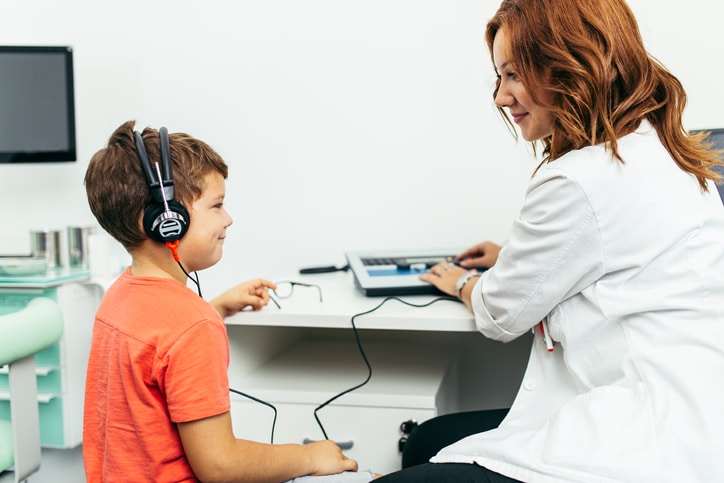
What are the Causes of hearing loss in children?
Hearing loss is a relatively common birth defect, affecting approximately 1 to 3 out of every 1,000 babies. While many factors can contribute to hearing loss, about half the time, the exact cause remains unknown.

Several circumstances can increase the likelihood of hearing loss in a child, including premature birth, an extended stay in the neonatal intensive care unit (NICU), jaundice requiring a blood transfusion, exposure to medications known to cause hearing loss, a family history of childhood hearing loss, birth complications, frequent ear infections, infections like meningitis or cytomegalovirus, and exposure to very loud sounds or noises, even briefly. These factors highlight the importance of early detection and intervention in managing childhood hearing loss.

What are the treatment options for hearing loss in children?
Hearing loss stemming from issues in the middle or outer ear can often be identified and treated with medication or other non-invasive methods. However, when dealing with congenital hearing loss in infants or sensorineural hearing loss, different treatment options are available based on candidacy. Hearing aids are a common solution for those with mild to severe hearing loss. These devices amplify sounds, making them clearer and easier to hear.
1. Hearing Aids
2. Cochlear Implant
3. BAHA

What are the treatment options for hearing loss in children?
Hearing loss stemming from issues in the middle or outer ear can often be identified and treated with medication or other non-invasive methods.
However, when dealing with congenital hearing loss in infants or sensorineural hearing loss, different treatment options are available based on candidacy. Hearing aids are a common solution for those with mild to severe hearing loss. These devices amplify sounds, making them clearer and easier to hear.
1. Hearing Aids
2. Cochlear Implant
3. BAHA
Hearing Aids
Hearing aids are small electronic devices that amplify sound to help people with hearing loss. They can help people hear better in both quiet and noisy situations and can improve speech.
Types of hearing aids-hearing aids come in many styles and types including:-
1. Behind the ear (BTE):- A small plastic case that sits behind the ear can correct moderately to serve the hearing loss.
2. In the ear (ITE):- A shell that fits in the outer part of the ear.
3. In the canal (ITC):- A tiny case that fits partly into the ear canal, but can still be seen.
4. Completely in the canal (CIC):- A very small, cosmetic option.
5. Invisible in the canal (IIC):- A type of hearing aid.
What is a Cochlear Implant?
Hearing is an essential sense that connects us to the world around us, enabling communication and enriching our lives. For individuals experiencing severe hearing loss due to inner-ear damage, traditional hearing aids may not provide sufficient improvement. In such cases, cochlear implants offer a promising alternative. A cochlear implant is an electronic device that improves hearing. It can be a choice for people who have severe hearing loss from inner-ear damage and can’t hear well with hearing aids. A cochlear sends sound past the damaged part of the ear straight to the hearing nerve called the cochlear nerve.

What is a Cochlear Implant?
Hearing is an essential sense that connects us to the world around us, enabling communication and enriching our lives. For individuals experiencing severe hearing loss due to inner ear damage, traditional hearing aids may not provide sufficient improvement.

In such cases, cochlear implants offer a promising alternative. A cochlear implant is an electronic device that improves hearing. It can be a choice for people who have severe hearing loss from inner-ear damage and can’t hear well with hearing aids. A cochlear sends sound past the damaged part of the ear straight to the hearing nerve called the cochlear nerve.

How Cochlear Implant Mapping is done for babies?
Mapping, an essential process in cochlear implant usage, involves adjusting the sound levels for each electrode to optimize hearing. This adjustment is done by connecting the cochlear implant processor to the audiologist’s computer, where a series of “beeps” are used to measure the user’s response. Based on these responses, the audiologist sets the levels for soft sounds (T-levels) and loud sounds (C-levels) for each electrode. The significance of mapping is particularly pronounced in the initial post-switch-on period.

How Cochlear Implant Mapping is done for babies?
Mapping, an essential process in cochlear implant usage, involves adjusting the sound levels for each electrode to optimize hearing.
This adjustment is done by connecting the cochlear implant processor to the audiologist’s computer, where a series of “beeps” are used to measure the user’s response. Based on these responses, the audiologist sets the levels for soft sounds (T-levels) and loud sounds (C-levels) for each electrode. The significance of mapping is particularly pronounced in the initial post-switch-on period.
What are the signs of a language disorder?
Signs of speech and language disorders in children are typically noticeable from birth to 4 years of age, underlining the importance of early detection. Children with these disorders may exhibit various signs, such as a lack of smiling or interaction with others, absence of babbling, limited use of sounds or gestures, difficulty understanding others, speaking only a few words, unclear speech, trouble forming sentences, and challenges in engaging with peers. Early recognition of these signs is crucial as it can lead to timely intervention, enhancing the child’s communication skills and overall development.

What are the signs of a language disorder?
Signs of speech and language disorders in children are typically noticeable from birth to 4 years of age, underlining the importance of early detection.

Children with these disorders may exhibit various signs, such as a lack of smiling or interaction with others, absence of babbling, limited use of sounds or gestures, difficulty understanding others, speaking only a few words, unclear speech, trouble forming sentences, and challenges in engaging with peers. Early recognition of these signs is crucial as it can lead to timely intervention, enhancing the child’s communication skills and overall development.
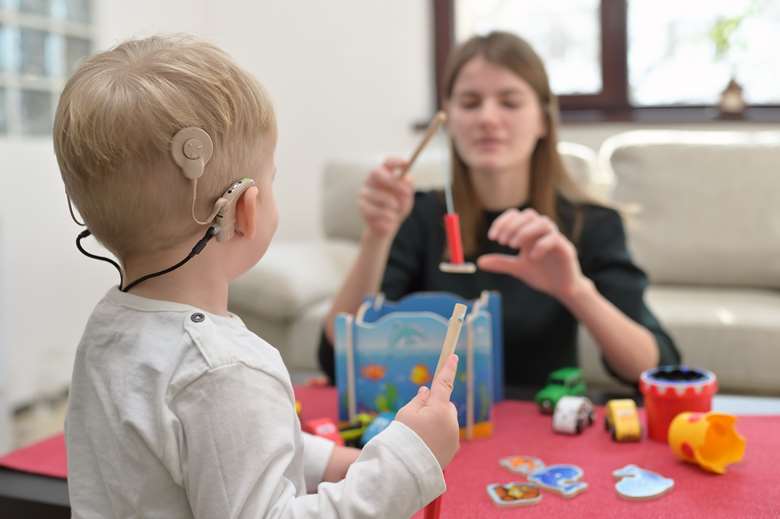
What is speech therapy?
Speech therapy is a specialized intervention service that focuses on improving a child’s speech and language skills, encompassing both verbal and nonverbal communication. It is designed to address a wide range of issues beyond just speaking, including feeding and swallowing difficulties, social skills development, sensory processing disorders, and expressive language disorders. Whether a child is completely non-verbal, excessively talkative, or falls somewhere in between, speech therapy can be highly beneficial. It can be particularly frustrating for children when they struggle with social interactions, have difficulty producing speech sounds correctly, or face challenges in understanding and using language appropriately. One of the key aspects of pediatric speech therapy is its focus on effective communication, which is essential for everyday life.

What is speech therapy?
Speech therapy is a specialized intervention service that focuses on improving a child’s speech and language skills, encompassing both verbal and nonverbal communication. It is designed to address a wide range of issues beyond just speaking, including feeding and swallowing difficulties, social skills development, sensory processing disorders, and expressive language disorders.
Whether a child is completely non-verbal, excessively talkative, or falls somewhere in between, speech therapy can be highly beneficial. It can be particularly frustrating for children when they struggle with social interactions, have difficulty producing speech sounds correctly, or face challenges in understanding and using language appropriately. One of the key aspects of pediatric speech therapy is its focus on effective communication, which is essential for everyday life.
Speech therapy treatment plans for children are tailored to their individual needs and goals. Various types of speech therapy are available to address different aspects of communication. Comprehensive evaluations can help identify specific issues such as apraxia of speech, articulation disorders, autism spectrum disorders, Down syndrome, expressive and receptive language delays and disorders, feeding disorders, hearing impairment-related delays, oral-motor disorders, fluency disorders (stuttering), pragmatic/social language disorders, developmental delays, and sensory processing disorders related to speech and language. Hearing tests are also conducted for babies and children to assess any hearing impairments that may be impacting their communication skills.
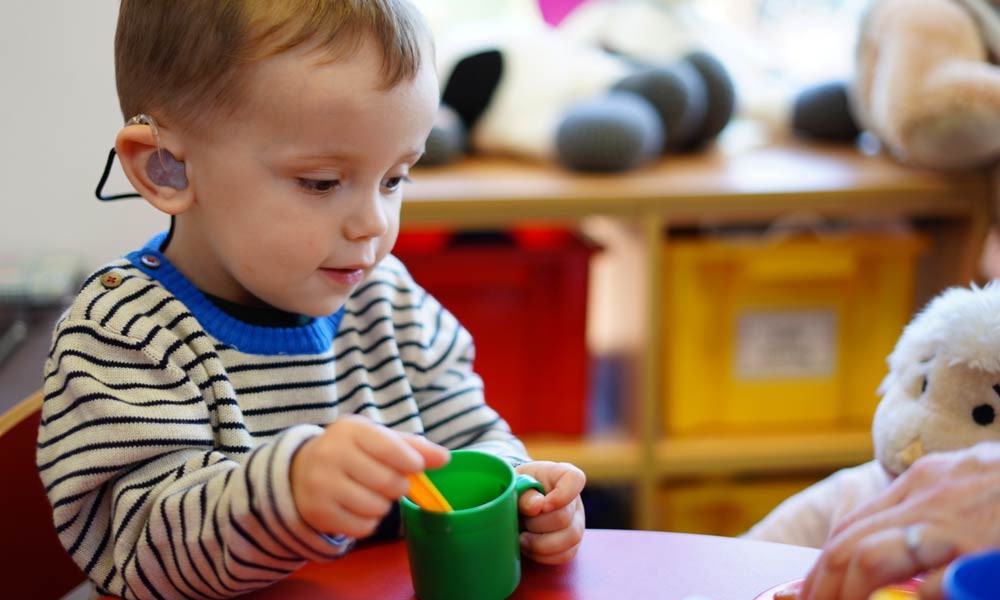
Different types of hearing tests
During a hearing evaluation, an audiologist will gather a comprehensive health history and perform age-appropriate hearing tests. These tests vary in type, with some applicable to all ages and others tailored to the child’s specific age and developmental stage. The purpose of these tests is to assess various aspects of hearing ability, such as sensitivity to different frequencies and the ability to distinguish between different sounds. By combining the health history with the results of these tests, the audiologist can determine the child’s hearing status and identify any potential hearing issues. This information is crucial for developing an appropriate treatment plan, which may include hearing aids, cochlear implants, or other interventions, depending on the nature and severity of the hearing loss.

Different types of hearing tests
During a hearing evaluation, an audiologist will gather a comprehensive health history and perform age-appropriate hearing tests.
These tests vary in type, with some applicable to all ages and others tailored to the child’s specific age and developmental stage. The purpose of these tests is to assess various aspects of hearing ability, such as sensitivity to different frequencies and the ability to distinguish between different sounds. By combining the health history with the results of these tests, the audiologist can determine the child’s hearing status and identify any potential hearing issues. This information is crucial for developing an appropriate treatment plan, which may include hearing aids, cochlear implants, or other interventions, depending on the nature and severity of the hearing loss. Hearing test for child in Saharanpur.
Hearing tests for a newborn baby
Newborns undergo two main types of hearing screening methods, which can be used individually or in combination. The first method is Evoked Otoacoustic Emissions (EOAE), where a small, flexible plug is inserted into the baby’s ear to send sounds through. A microphone in the plug records the responses of the normal ear to these sounds. If there is no response, it may indicate hearing loss. This test is painless and typically completed within a few minutes while the baby sleeps.
The second method is Auditory Brainstem Response (ABR), which involves attaching electrodes to the baby’s scalp with adhesive. Clicking sounds are then played through small earphones in the baby’s ears while they sleep, and the test measures the brain’s activity in response to these sounds. Like EOAE, ABR is painless and usually completed in a few minutes.
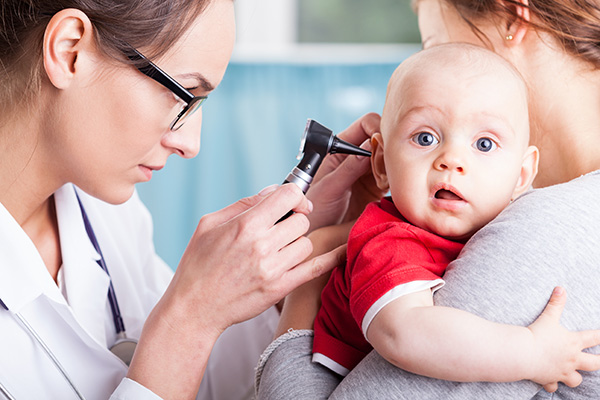
Hearing tests for a newborn baby
Newborns undergo two main types of hearing screening methods, which can be used individually or in combination. The first method is Evoked Otoacoustic Emissions (EOAE), where a small, flexible plug is inserted into the baby’s ear to send sounds through.

A microphone in the plug records the responses of the normal ear to these sounds. If there is no response, it may indicate hearing loss. This test is painless and typically completed within a few minutes while the baby sleeps.
The second method is Auditory Brainstem Response (ABR), which involves attaching electrodes to the baby’s scalp with adhesive. Clicking sounds are then played through small earphones in the baby’s ears while they sleep, and the test measures the brain’s activity in response to these sounds. Like EOAE, ABR is painless and usually completed in a few minutes.

Occupational Therapy
Occupational therapy (OT) is a branch of health care that helps people of all ages who have physical sensory, or cognitive problems. OT can help them regain independence in all areas of their lives.
Auditory Verbal Therapy (AVT)
It is also known as auditory-based therapy, which is a type of early intervention therapy that helps deaf and heard of hearing children, or those who use hearing technology, learn to speak and listen. AVT focuses on listening and developing and developing the auditory brain to help children learn to communicate through speech.
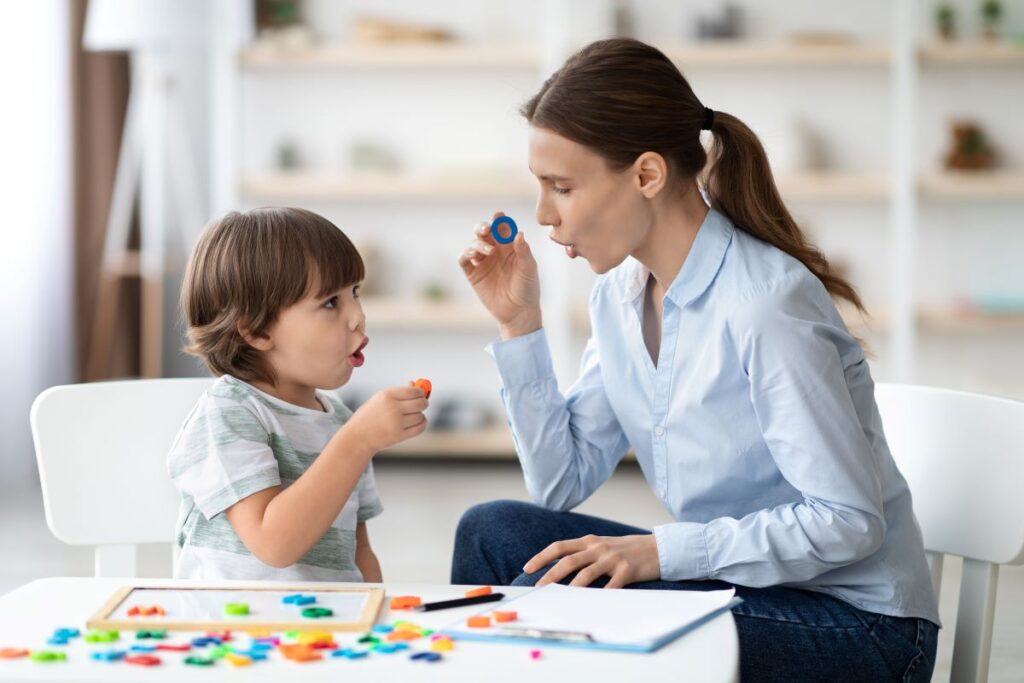

Applied Behaviour Analysis (ABA)
ABA therapy applies our understanding of how behavior works to real situations. The goal is to increase behaviors that are helpful and decrease behaviors that are harmful or effect learning.
BAHA
A bone-anchored hearing aid (BAHA) is a hearing device that uses bone conduction to transmit sound directly to the inner ear. It’s often used by people who can’t wear other hearing aids, such as those with conductive hearing loss, unilateral hearing loss, single-sided deafness, or chronic ear drainings.

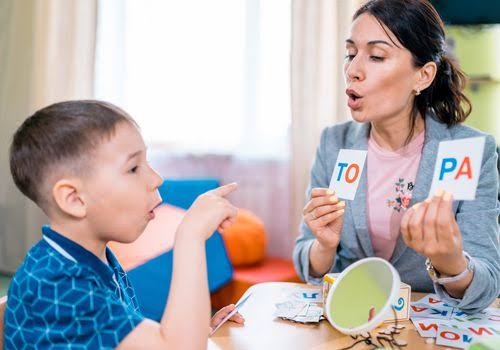
Misarticulation
Misarticulation is a communication disorder that affects the ability to produce speech sound correctly. It is a common condition that effects both childrens and adults.
Delayed Speech and Language
Every child develops at his or her own pace. But if your child doesn’t talk as much as most children of the same age, the problem may be speech delay.
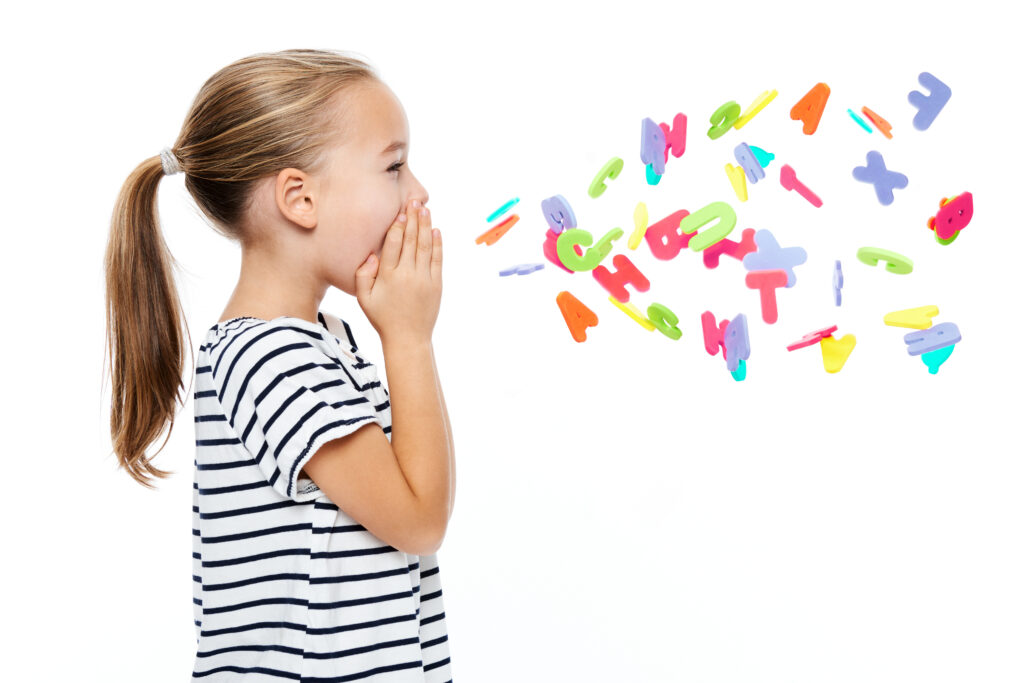
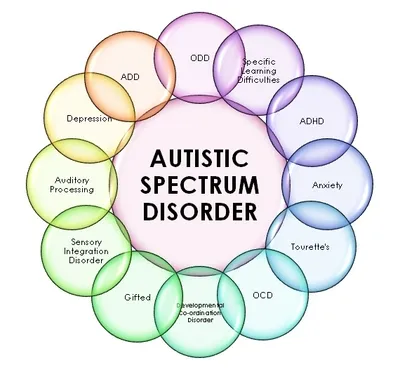
Autism/ADHD
Autism and ADHD are neurodevelopmental disorders that affect behavior, communication, and learning. Autism often involves challenges with social interaction, repetitive behaviors, and sensory sensitivities. ADHD is characterized by inattention, hyperactivity, and impulsivity. While they are distinct conditions, they can co-occur and share some overlapping traits. Early diagnosis and supportive interventions such as therapy, structured routines, and individualized education plans can help individuals with Autism or ADHD lead successful and fulfilling lives.
Stuttering
A disorder involving frequent problems with the normal with normal fluency and flow of speech.


Voice Disorders
Voice disorders can affect a person’s ability to speak normally they can be caused by physical changes to the larynx, nervous system issues, or improper use of the voice.
Hearing Impaired
Type of early intervention therapy for young children who are deaf and hard of hearing, or those who use hearing technology such as hearing aids or cochlear implants


BERA
BERA (Brainstem Evoked Response Audiometry) is a non-invasive test used to assess hearing and detect auditory nerve or brainstem disorders. It measures the brain’s electrical responses to sound stimuli through electrodes placed on the scalp. BERA is especially useful for testing infants, young children, or individuals who cannot respond behaviorally. It helps in early diagnosis of hearing loss, guiding appropriate treatment or hearing aid fitting to support normal speech and language development.
OAE
OAE (Otoacoustic Emissions) is a quick, non-invasive hearing test that measures sound waves produced in the inner ear (cochlea) in response to auditory stimuli. It helps detect hearing loss, especially in newborns, infants, and those unable to give behavioral responses. A small probe is placed in the ear canal to deliver sounds and record responses. OAE testing is essential for early hearing screening, allowing timely intervention and support for speech and language development.


ASSR
ASSR (Auditory Steady-State Response) is an advanced hearing test that evaluates how the brain responds to rapid auditory stimuli. It is used to estimate hearing thresholds across different frequencies, making it especially useful for infants or individuals who cannot provide behavioral feedback. Electrodes are placed on the scalp to record brain activity in response to sound. ASSR provides detailed audiological information, helping audiologists in diagnosing hearing loss and fitting appropriate hearing devices.
Cochlear Implant Surgery
Cochlear implant surgery is a medical procedure that helps individuals with severe to profound hearing loss regain the ability to hear. The implant bypasses damaged parts of the inner ear and directly stimulates the auditory nerve. During surgery, a device is implanted under the skin behind the ear, and electrodes are inserted into the cochlea. After healing, the external processor is activated. Cochlear implants can significantly improve hearing, speech understanding, and quality of life.

Contact Us

